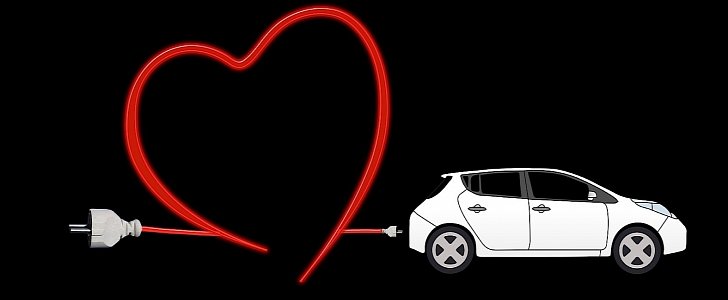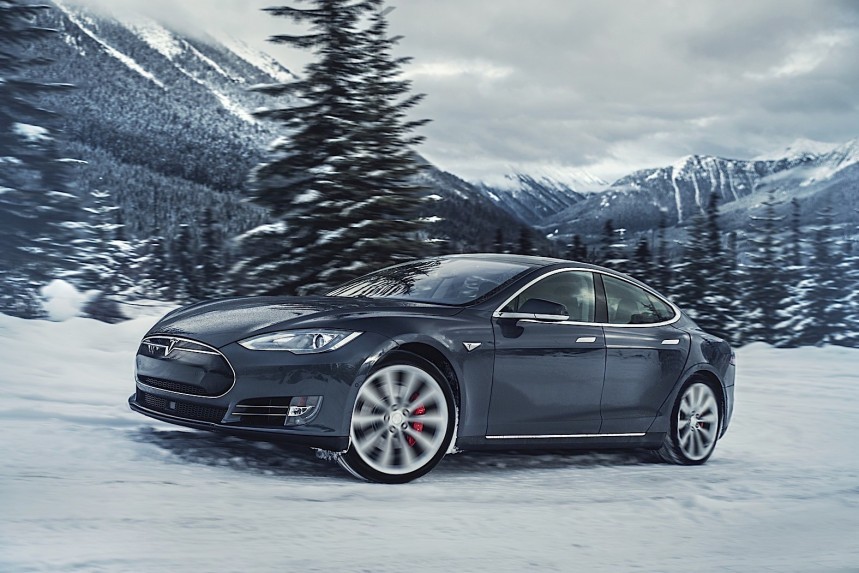This conversation couldn't have taken place a decade ago, when you could count electric carmakers using the fingers from a single hand (if you're a regular five-fingers per member human, that is).
Well, here we are at the dawn of the 2020-2021 winter season in most countries, and guess what? A regular, 95-percentile human doesn't own enough fingers to count all the carmakers that have at least one battery-powererd electric model in their lineup.
As more electric cars are starting to appear, some better or cheaper or with a longer range than others, it seems that the long-prophesied era of battery-powered transportation is on the verge of becoming reality sooner than later. The U.S. electric car market alone is expected to increase about six times over the next 5 years.
Until that time comes, it looks like current EV owners are treated almost the same as lab rats by most car companies, especially when it comes to long-term electric car ownership. As any ICE-powered car owner knows, unless he's based somewhere near the Tropics, the winter season comes with some inherent yearly procedures that must be followed so that he can safely continue to drive a vehicle in comfort during this time.
Comprising stuff like winter tires, wiper fluid replacement and maybe renewing the engine coolant, the seasonal winter procedure is probably on most drivers' minds each November. What about electric car owners, though? All EV makers have induced the idea that an electric car is by default less costly to own than a car powered by a smelly old internal combustion engine that uses dinosaur juice and spews dangerous farts up the tailpipe.
When it comes to short-term ownership they're actually right, at least for the time being, since most advanced countries have free-charging ports in increasing numbers and electricity is cheaper than gasoline or diesel fuel almost everywhere.
While that may be true in most cases, not so many EV makers like to offer much braggadocio regarding their green vehicles and their abysmal range during the wintertime. Good thing we're here to put that into perspective!
Apart from the aforementioned winter procedures that can be expected from any normal ICE-powered car owner, which are usually done just once, at the beginning of winter, EV owners are expected to do quite a bit more.
Most manufacturer-backed studies state that electric cars lose about 20 to 25 percent range when driven in colder temperatures, but both personal experience and non-manufacturer-backed studies actually say that the difference between summer and winter EV range can be as high as 50 percent, depending on a couple of variables.
All those variables are mostly part of the reason they bought a car of a certain price in the first place, so we should probably call them constants in some scenarios.
With all that being said, let's dive in what you should do before or during every single drive in cold weather if you are a new EV owner:
If you have harsh winters where you live and you bought an EV it's safe to assume that you checked the heated seats and/or steering wheel options (if they were available). If you have these features on your car and there is less than 0 degrees Celsius (32 Fahrenheit) outside, it's also safe to assume that you would prefer your behind and palms to be at a reasonable temperature while operating the car, since it's not only more comfortable but also safer, right?
Well, maybe you should totally forget about that and invest in a range of Inuit-inspired parkas, hats, and gloves that will keep you warm enough in cold weather.
Any use of the on-board central heater, heated seats and/or steering wheel will drain your EV's battery faster than you can spell “lithium-ion.” Sadly, this also means that the car's windows will fog uncontrollably after a few minutes of driving. You can only counteract window fogging if you either crack open a window and thus freeze even more, or turn on the AC and lose driving range. It's all part of the joys of driving an EV in cold-weather.
While in a regular ICE-powered car you simply get in, start the engine and drive away without a worry in the world, electric vehicles are still somewhat limited by a lack of charging infrastructure, low range and massive charging times.
These downsides almost double during cold weather mostly because batteries are pretty much like humans. They provide peak performance at temperatures between 15 degrees Celsius (60 F) to 26-27 degrees Celsius (80 F). As soon as you stray away from that temperature range in either direction things starts to go bad.
Thankfully, an American Automobile Association (AAA) study from a few months ago concluded that hot-weather only drains about 17 percent of the range in electric cars. On the other hand, cold-weather almost halves their range, so winter is pretty much the worse season to check the qualities of an electric car.
Instead of just unplugging your EV and jumping in for a ride, you should first pre-heat the car's interior and the battery alike. Most modern battery-powered cars now have apps that let you do that from the comfort of your home, but it still a time-consuming affair.
After that, you're still not off the hook because the aforementioned halving of the range means you will need to plan your trip ahead and not base your driving strictly on the roads you know. Open whatever charging station app you have and see if there are enough charging points along your route and/or if they are already busy.
Cold batteries are like George Costanza's genitalia when exiting a cold pool. Despite being outfitted with powerful sensors and all kinds of computers, modern electric cars still don't know how to act when temperatures drop and batteries begin to simply slow down. That translates into the board computer giving you an estimated range that is not even remotely true.
We won't bore you with the physics (actually, it's mostly chemistry) behind this because we will have a separate article on the subject, but let's just say that current battery technology doesn't mix with the cold at all.
Most EV owners believe that the usable capacity of their batteries is between 0 and 100 percent because that's what the car is telling them. In reality, depending on a number of factors including battery temperature, interior temperature, road conditions and driving style, its usable capacity can shrink by 40 to 50 percent.
To put that into perspective, it's the equivalent of a Toyota Prius, which is EPA rated at 52 combined mpg (4.5 l/100 km) showing you that you have an 11.3 gallons (43 liters) fuel tank that shrinks to about 6 gallons (22 liters) during cold weather.
Usually, there aren't too many reasons to overthink an upcoming drive, no matter if it's during summer or winter, but current battery-powered cars are on a quest to change that and sadly not many people seem to talk about it.
Whatever you do and however you look at it, driving an electric car in freezing temperatures is curageous, especially if you do it in an area with poor charging infrastructure. The funny thing is the coldest countries in Northern Europe are also where battery-powered cars have thrived the most in recent years, but that is mostly due to aggressive government subsidies and a general desire of the population to be more eco-friendly, not battery technology, which is still lagging from this perspective.
In conclusion, we have a piece of single and probably most important advice for EV owners if they come across sub-arctic driving conditions this winter. Don't get angry, practice your breathing and meditate during those exponentially increasing charging times. Better yet, just don't drive at all and you will be even more eco-friendly.
As more electric cars are starting to appear, some better or cheaper or with a longer range than others, it seems that the long-prophesied era of battery-powered transportation is on the verge of becoming reality sooner than later. The U.S. electric car market alone is expected to increase about six times over the next 5 years.
Until that time comes, it looks like current EV owners are treated almost the same as lab rats by most car companies, especially when it comes to long-term electric car ownership. As any ICE-powered car owner knows, unless he's based somewhere near the Tropics, the winter season comes with some inherent yearly procedures that must be followed so that he can safely continue to drive a vehicle in comfort during this time.
Comprising stuff like winter tires, wiper fluid replacement and maybe renewing the engine coolant, the seasonal winter procedure is probably on most drivers' minds each November. What about electric car owners, though? All EV makers have induced the idea that an electric car is by default less costly to own than a car powered by a smelly old internal combustion engine that uses dinosaur juice and spews dangerous farts up the tailpipe.
When it comes to short-term ownership they're actually right, at least for the time being, since most advanced countries have free-charging ports in increasing numbers and electricity is cheaper than gasoline or diesel fuel almost everywhere.
While that may be true in most cases, not so many EV makers like to offer much braggadocio regarding their green vehicles and their abysmal range during the wintertime. Good thing we're here to put that into perspective!
Apart from the aforementioned winter procedures that can be expected from any normal ICE-powered car owner, which are usually done just once, at the beginning of winter, EV owners are expected to do quite a bit more.
Most manufacturer-backed studies state that electric cars lose about 20 to 25 percent range when driven in colder temperatures, but both personal experience and non-manufacturer-backed studies actually say that the difference between summer and winter EV range can be as high as 50 percent, depending on a couple of variables.
All those variables are mostly part of the reason they bought a car of a certain price in the first place, so we should probably call them constants in some scenarios.
With all that being said, let's dive in what you should do before or during every single drive in cold weather if you are a new EV owner:
Learn From the Inuits
Well, maybe you should totally forget about that and invest in a range of Inuit-inspired parkas, hats, and gloves that will keep you warm enough in cold weather.
Any use of the on-board central heater, heated seats and/or steering wheel will drain your EV's battery faster than you can spell “lithium-ion.” Sadly, this also means that the car's windows will fog uncontrollably after a few minutes of driving. You can only counteract window fogging if you either crack open a window and thus freeze even more, or turn on the AC and lose driving range. It's all part of the joys of driving an EV in cold-weather.
Lose a Lot of Time
These downsides almost double during cold weather mostly because batteries are pretty much like humans. They provide peak performance at temperatures between 15 degrees Celsius (60 F) to 26-27 degrees Celsius (80 F). As soon as you stray away from that temperature range in either direction things starts to go bad.
Thankfully, an American Automobile Association (AAA) study from a few months ago concluded that hot-weather only drains about 17 percent of the range in electric cars. On the other hand, cold-weather almost halves their range, so winter is pretty much the worse season to check the qualities of an electric car.
Instead of just unplugging your EV and jumping in for a ride, you should first pre-heat the car's interior and the battery alike. Most modern battery-powered cars now have apps that let you do that from the comfort of your home, but it still a time-consuming affair.
After that, you're still not off the hook because the aforementioned halving of the range means you will need to plan your trip ahead and not base your driving strictly on the roads you know. Open whatever charging station app you have and see if there are enough charging points along your route and/or if they are already busy.
Always Assume You Will Need Twice the Range
We won't bore you with the physics (actually, it's mostly chemistry) behind this because we will have a separate article on the subject, but let's just say that current battery technology doesn't mix with the cold at all.
Most EV owners believe that the usable capacity of their batteries is between 0 and 100 percent because that's what the car is telling them. In reality, depending on a number of factors including battery temperature, interior temperature, road conditions and driving style, its usable capacity can shrink by 40 to 50 percent.
To put that into perspective, it's the equivalent of a Toyota Prius, which is EPA rated at 52 combined mpg (4.5 l/100 km) showing you that you have an 11.3 gallons (43 liters) fuel tank that shrinks to about 6 gallons (22 liters) during cold weather.
Think happy thoughts!
Whatever you do and however you look at it, driving an electric car in freezing temperatures is curageous, especially if you do it in an area with poor charging infrastructure. The funny thing is the coldest countries in Northern Europe are also where battery-powered cars have thrived the most in recent years, but that is mostly due to aggressive government subsidies and a general desire of the population to be more eco-friendly, not battery technology, which is still lagging from this perspective.
In conclusion, we have a piece of single and probably most important advice for EV owners if they come across sub-arctic driving conditions this winter. Don't get angry, practice your breathing and meditate during those exponentially increasing charging times. Better yet, just don't drive at all and you will be even more eco-friendly.




















